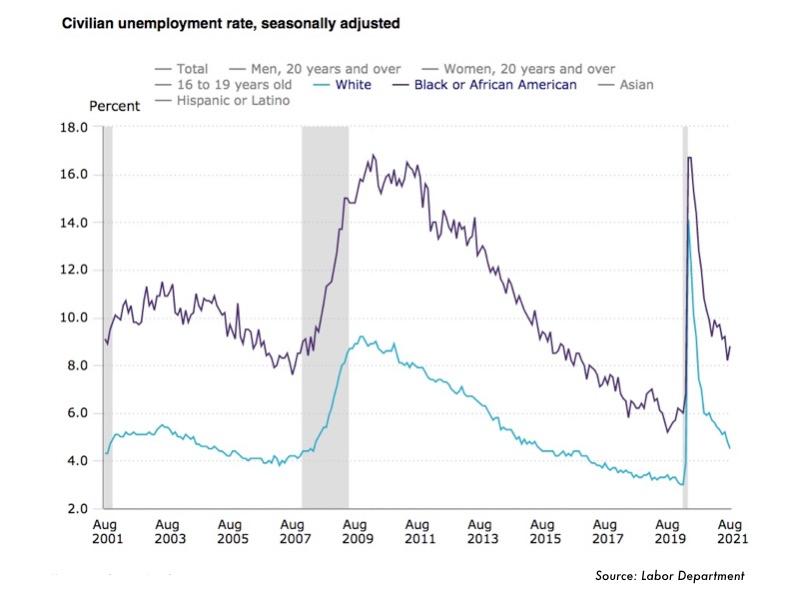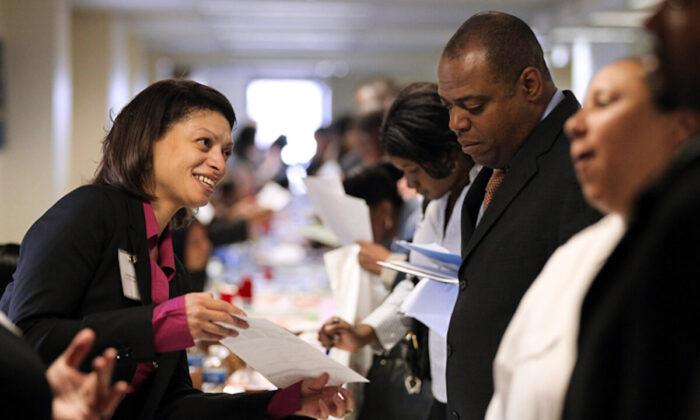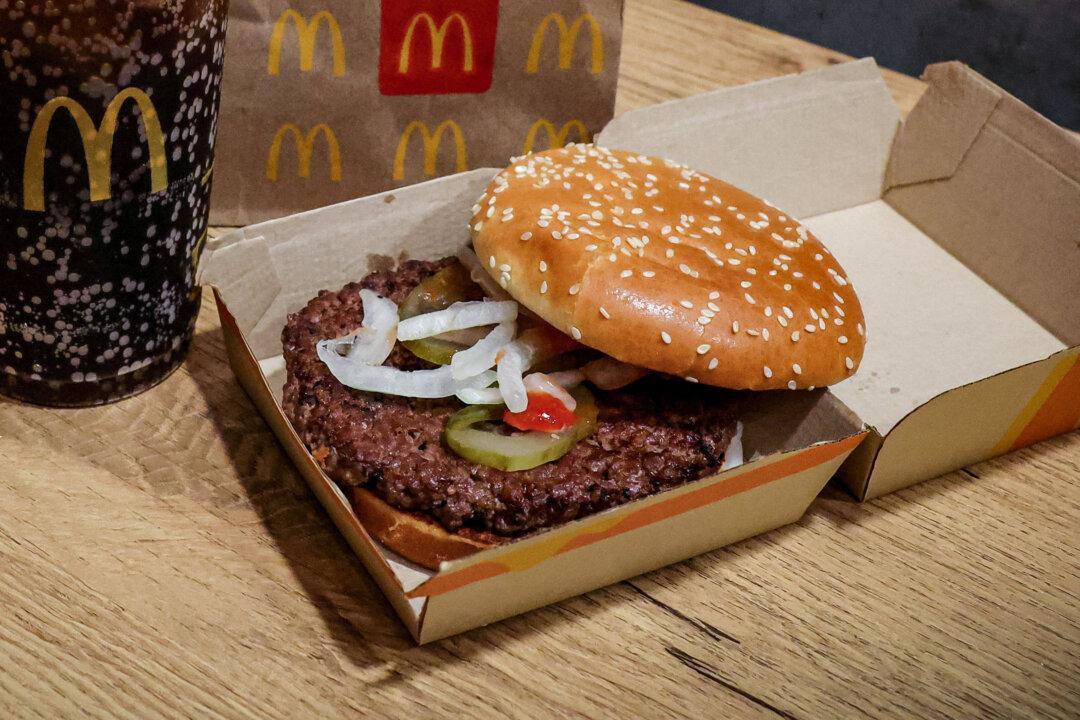Friday’s non-farm payrolls report—a barometer of America’s labor market health—not only reflected below-expectations job growth in August but also showed unemployment rising for black workers, teenagers, and those with some college or an associate degree.
“With a big shortfall in jobs creation or recovery in August, it appears the Delta variant has infected the U.S. economy. Payrolls growth came in well below expectations and at the lowest level since January,” Bankrate senior economic analyst Mark Hamrick said in an emailed statement to The Epoch Times.
The overall unemployment rate fell to 5.2 percent in August from 5.4 percent in July, while the total number of unemployed people edged down to 8.4 million.
“This latest employment snapshot interrupts the process of substantial further progress as called for by the Federal Reserve as it considers dialing back on boosting the economy. The unemployment rate at 5.2 percent still has some way to before matching the 3.5 percent low notched before the pandemic. Even so, it is the lowest level since the pandemic began,” Hamrick added.
While it’s normal for unemployment rates among all groups to see upward reversals amid a broader downtrend, some economists expressed concern about the latest figures.

The slowdown in jobs growth was most notable in the leisure and hospitality sector, which recorded 2.1 million job gains between February and July but came in flat in August.
Retail trade led the way in employment losses, shedding 28,500 jobs, followed by temporary help services (-5,800 jobs), and health care and social assistance (-4,600).
Private-sector job growth contributed 243,000 in job gains, while the government sector shed 8,000 positions, for a net gain of 235,000 in August.
So far this year, non-farm job growth has averaged 586,000 per month and, while employment has risen by 17 million since April 2020, it remains down by 5.3 million, or 3.5 percent, from its pre-pandemic level in February 2020.
“While I know some wanted to see a larger number today, and so did I, what we’ve seen this year is a continued growth, month after month, in job creation,” Biden added. “We are adding jobs, not losing them.”
Biden blamed the Delta surge for why the jobs report wasn’t stronger.
“President Biden’s ‘worker-less recovery’ is hammering both Main Street and families as businesses fight to fill jobs and families struggle with rising prices. No wonder the recovery is stalling, and consumer optimism has dropped alarmingly,” he stated, noting also ”no progress” on lifting the labor force participation rate, which in August held steady at 61.7 percent.
The uptick in black unemployment challenges the Federal Reserve’s goal that its “maximum employment” objective also be “broad and inclusive.” The figure creates tough optics for the Fed as it considers pulling back on stimulus at its upcoming policy meeting at the end of September.





